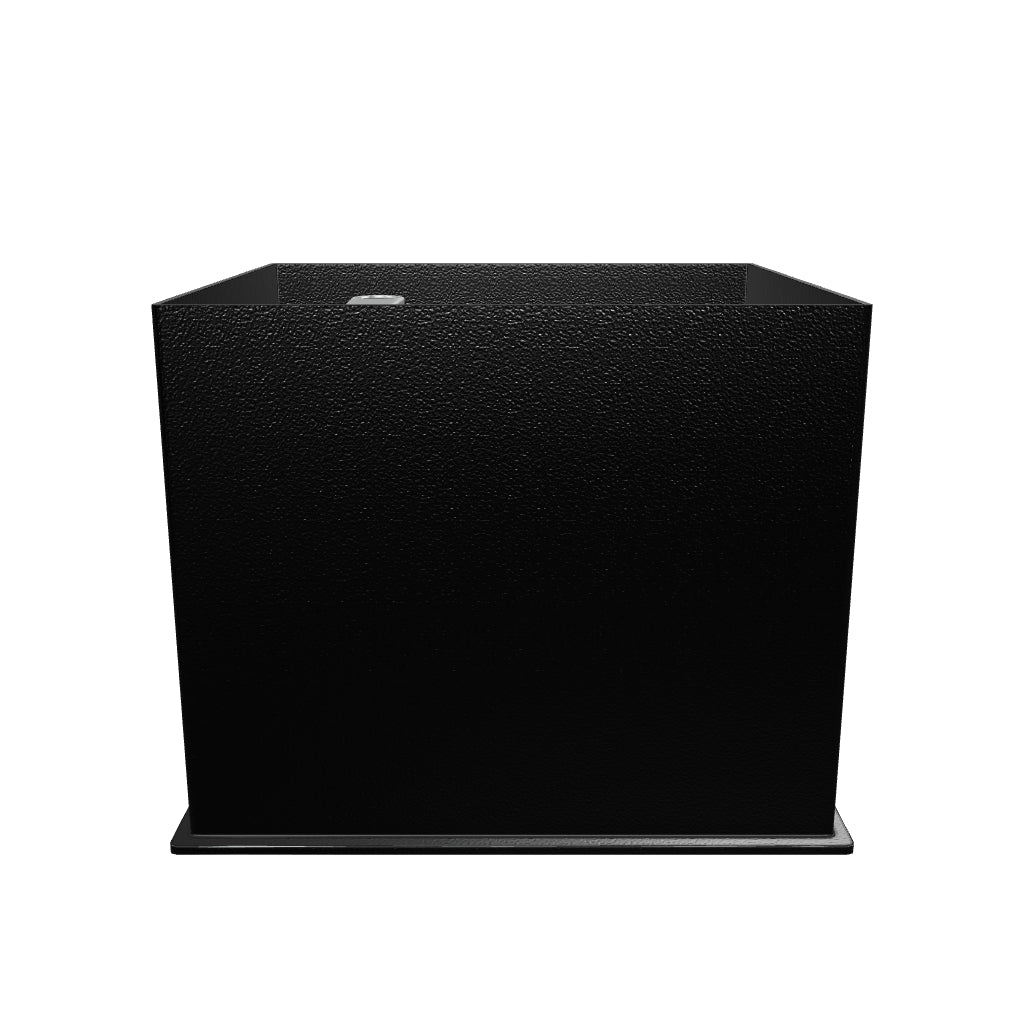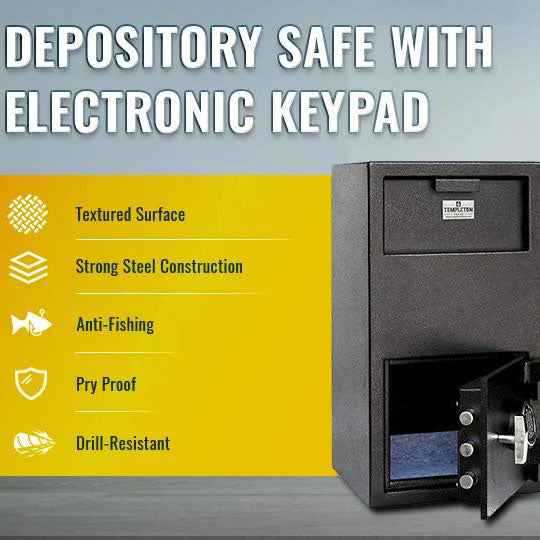Types of Safes and How to Install and Secure Your New Safe
When it comes to protecting your most valuable possessions, a home safe is an essential addition to your security arsenal. Whether you're safeguarding important documents, jewelry, firearms, or cash, a well-installed and secured home safe can provide you with peace of mind. In this comprehensive guide, we will walk you through the step-by-step process of installing and securing different types of home safes, including wall-mounted safes, floor safes, and concealed drop-in safes. Additionally, we'll provide tips on discreetly hiding your safe to enhance its security.
The Importance of Home Safes
Before we delve into the installation process, let's understand why having a home safe is crucial:
-
Protection from Theft: Home burglaries are a real concern, and a properly secured safe can deter thieves from attempting to steal your valuable items.
-
Fire and Water Resistance: Many safes are designed to withstand fire and water damage, ensuring that your important documents and irreplaceable items remain intact in case of emergencies.
-
Safe Storage of Firearms: If you own firearms, a safe is essential for both safety and legal compliance, keeping your weapons out of reach from unauthorized individuals.
-
Organization: Safes can help you keep your important documents and valuables organized, making it easier to access them when needed.
Now that you understand the importance of having a home safe, let's proceed with the installation process.
Choosing the Right Safe
Before you start installing a home safe, you need to select the right one for your needs. Consider the following factors:
1. Safe Type
There are several types of home safes to choose from, including:
Wall-Mounted Safes
Wall-mounted safes are installed within the wall, making them discreet and space-saving. They are ideal for smaller items and can be hidden behind paintings or mirrors. To install a wall-mounted safe:
Step 1: Choose a Location
Select a suitable location on a wall where the safe will be inconspicuous but easily accessible. Ensure there are no electrical or plumbing components behind the wall.
Step 2: Cut an Opening
Cut a hole in the wall to fit the safe's dimensions. Follow the manufacturer's instructions for specific measurements.
Step 3: Secure the Safe
Place the safe into the hole and secure it with bolts provided by the manufacturer. Ensure it is level and flush with the wall.
Floor Safes
Floor safes are installed beneath the floor surface, providing an extra layer of security. They are typically used for larger items, such as cash, jewelry, or firearms. To install a floor safe:
Step 1: Select a Location
Choose a location on the floor that is not susceptible to flooding or water damage. Consider areas like closets, the basement, or a hidden corner.
Step 2: Cut a Hole
Using the manufacturer's instructions as a guide, cut a hole in the floor that matches the safe's dimensions. Ensure the hole is deep enough to accommodate the safe.
Step 3: Install the Safe
Place the safe into the hole, ensuring it is level with the floor surface. Secure it in place using concrete or a suitable adhesive.
Concealed Drop-In Safes
Concealed drop-in safes are designed to be hidden beneath furniture or within cabinets. They are excellent for keeping your valuables discreetly stored. To install a concealed drop-in safe:
Step 1: Select a Location
Choose a location within a piece of furniture or cabinetry where the safe can be concealed easily. Make sure it's easily accessible to you.
Step 2: Create a Compartment
Modify the furniture or cabinet to create a compartment for the safe. This may involve removing a drawer or section of the furniture.
Step 3: Install the Safe
Place the safe within the compartment and secure it in place, ensuring it's level and hidden from view.
2. Size and Capacity
Consider the size of the safe based on what you intend to store in it. It's essential to choose a safe that can accommodate your valuables comfortably.
3. Locking Mechanism
Safes come with various locking mechanisms, including key locks, combination locks, electronic locks, or biometric locks. Choose one that suits your preferences and security requirements.
4. Fire and Water Resistance
If you want to protect your items from fire and water damage, opt for a safe with adequate fire and water resistance ratings. Look for safes that have been tested and certified by reputable organizations.
5. Security Rating
Check the safe's security rating, which indicates its level of protection against theft. Higher-rated safes offer better security.
Once you've chosen the right safe for your needs, it's time to move on to the installation process.
Installing Your Home Safe
Tools and Materials Needed
Before you begin, gather the following tools and materials:
- Safe (selected based on your needs)
- Mounting bolts (provided with the safe)
- Level
- Stud finder
- Screwdriver
- Power drill
- Concrete mix and trowel (for floor safes)
- Wood saw (for concealed drop-in safes)
Installation Steps
1. Prepare the Area
Before you start installing the safe, clear the area around it to ensure you have enough space to work comfortably.
2. Mark the Location
Using the stud finder, mark the locations of the wall studs or floor joists in the area where you plan to install the safe. This step is crucial for ensuring a secure installation.
3. Position the Safe
Place the safe in the selected location, aligning it with the markings for wall studs or floor joists. Use the level to ensure that the safe is perfectly straight and level.
4. Drill Holes
For wall-mounted safes, use the power drill to create holes in the wall where the safe's mounting bolts will go. For floor safes, you'll need to drill holes in the concrete or floor surface. Follow the manufacturer's instructions for the size and depth of the holes.
5. Secure the Safe
Insert the mounting bolts provided with the safe into the drilled holes. Tighten them securely using the screwdriver or a wrench. Make sure the safe is firmly anchored in place.
6. Test the Safe
After securing the safe, test the locking mechanism to ensure it functions correctly. Check that the door opens and closes smoothly, and the lock engages without any issues.
Hiding Your Home Safe
While a secure installation is essential, the level of security also depends on how well you can hide your safe. Here are some tips for discreetly concealing your safe:
-
Use Decorative Covers: Consider using decorative covers like paintings, mirrors, or wall hangings to hide wall-mounted safes. These covers can swing open to reveal the safe when needed.
-
Furniture Camouflage: Concealed drop-in safes can be hidden within furniture like coffee tables, nightstands, or bookshelves. Ensure the furniture piece matches the room's decor to avoid suspicion.
-
False Panels: Create false panels or compartments within cabinets or closets to hide floor safes. These panels can be designed to blend seamlessly with the surrounding surfaces.
-
Inconspicuous Locations: Place your safe in an area that wouldn't typically attract attention, such as the back of a closet, behind heavy furniture, or inside a storage room.
-
Install in Uncommon Areas: Avoid installing your safe in the master bedroom or master bathroom, as these are often the first places burglars search. Consider less obvious locations like a guest room or basement.
Additional Security Tips
To further enhance the security of your home safe, consider these additional tips:
-
Don't Share Your Combination or Key: Keep the combination or key to your safe a closely guarded secret. Only share it with trusted individuals who need access.
-
Regularly Change Combinations: If you have a combination lock, change it periodically to minimize the risk of unauthorized access.
-
Security Cameras: Install security cameras in your home, including in the vicinity of your safe's location. This can deter burglars and provide evidence in case of a break-in.
-
Alarm System Integration: Integrate your safe with your home security system, so any unauthorized access triggers an alarm.
-
Insurance: Ensure your valuable items are adequately insured, even when stored in a safe. This provides an additional layer of protection in case of theft or damage.
Installing and securing a home safe is a vital step in safeguarding your valuable possessions and important documents. By selecting the right type of safe, ensuring a secure installation, and taking steps to discreetly hide it, you can significantly enhance the security of your home. Remember to keep the combination or key to your safe confidential, and consider additional security measures like cameras and alarm systems to provide comprehensive protection for your belongings. With the right precautions in place, you can have peace of mind knowing that your valuables are well protected.






























